Disclosure: Meeple Mountain received a free copy of this product in exchange for an honest, unbiased review. This review is not intended to be an endorsement.
I’ve played a few games of Pollen, Reiner Knizia’s newest tile-layer, with coworkers at the board game café where I work. It’s an easy one to break out under such circumstances. For one thing, it’s quick to teach. In fact, I’ll teach it to you right now.
Each player has a matching deck of cards (which function as tiles), marked with between one and four symbols of one of four types: bees, beetles, butterflies, and a wild symbol that counts as all three.

Each player shuffles their deck and draws a hand of five. You take turns playing one of your cards down on the table, contiguous to the cards previously played, then draw a replacement from your deck.
In addition to the decks of cards, there is a bag of Pollinator Tokens.
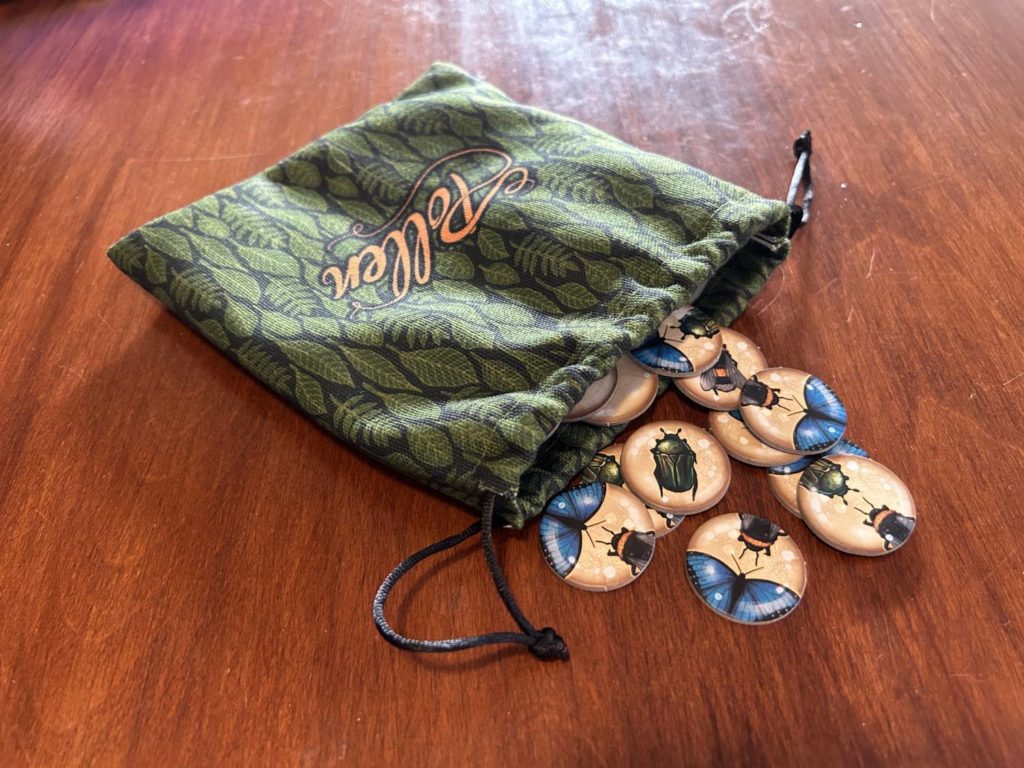
These little circles show anywhere between one and three of the insect types. When two players’ cards are placed adjacent to one another, one Pollinator Token gets placed at each intersection.
Once an Insect Token is entirely surrounded, insects are rewarded. Think of the symbols on each card as influence over the corresponding insect type. Each player with the majority of influence for a given insect on the Pollinator Token gets to take a wooden Scoring Meeple from the supply.
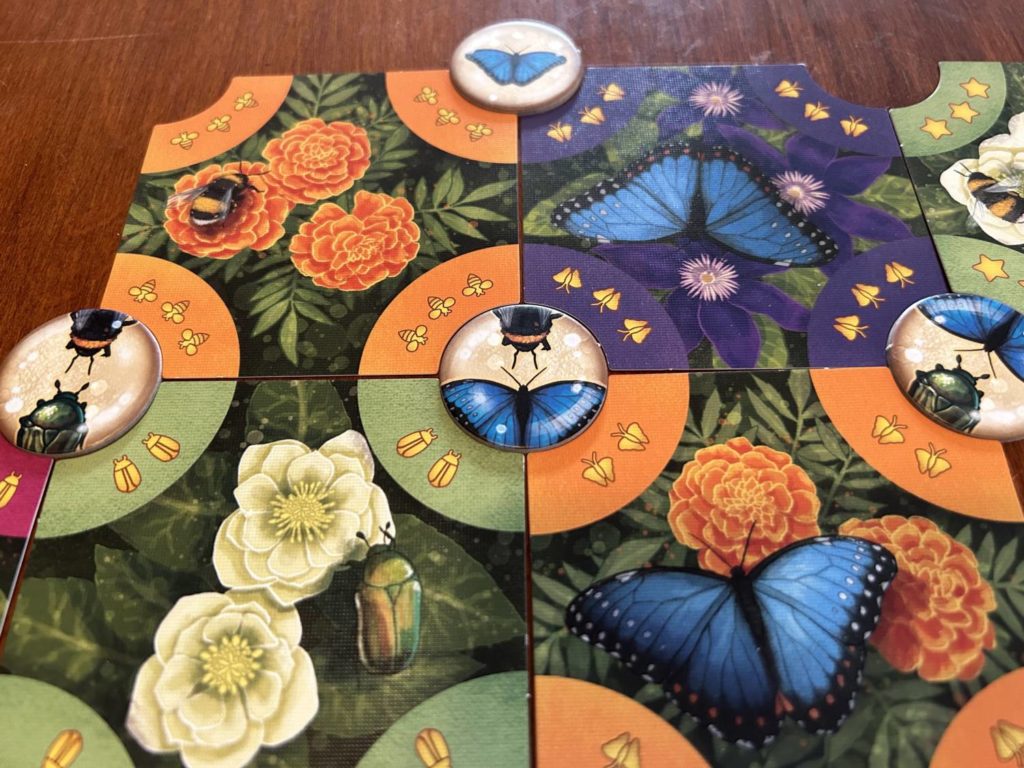
The game ends when one of the three types of Scoring Meeples runs out, when all players have played all of their cards, or, rarely, when the Pollinator Tokens are gone.
As you can see, it doesn’t take long to get the gist. In addition to being quick to teach, Pollen is also an ideal work game because it doesn’t suffer much for interruptions. As you might expect while playing a game at work, each of us has to occasionally step away to take care of customers.
Not only did the pauses not feel detrimental, they gave the people left behind time to drink in the board. You start thinking about what cards your opponents have played, and what cards are left. You find yourself eyeing everyone else’s pile of meeples, figuring out what they likely want, and what you can get away with securing for yourself.
Basically, you start thinking about contingencies, and contingencies for those contingencies. I knew the game was good when each coworker would come back to the table and immediately ask, with sincere interest, “What did each of you do on your turn?”

Buzz (What I Like)
Pollen is deeply interactive. You will only do well if you’re paying attention. It’s a wonderful distillation of near-perfect information. You know the cards in your deck. You know the cards in your opponents’ decks. You know what cards you’ve played. You know what cards they’ve played. You know what bugs everyone has. In a masterstroke, you also know what the next Pollinator Token will be. One sits on deck, outside the bag, waiting to be placed. That single choice turns Pollen into a game of tactics rather than luck.
The only things you don’t know are the contents of each player’s hand, and what they are thinking. Thematically spurious, perhaps, but Pollen feels like nothing so much as a dogfight.
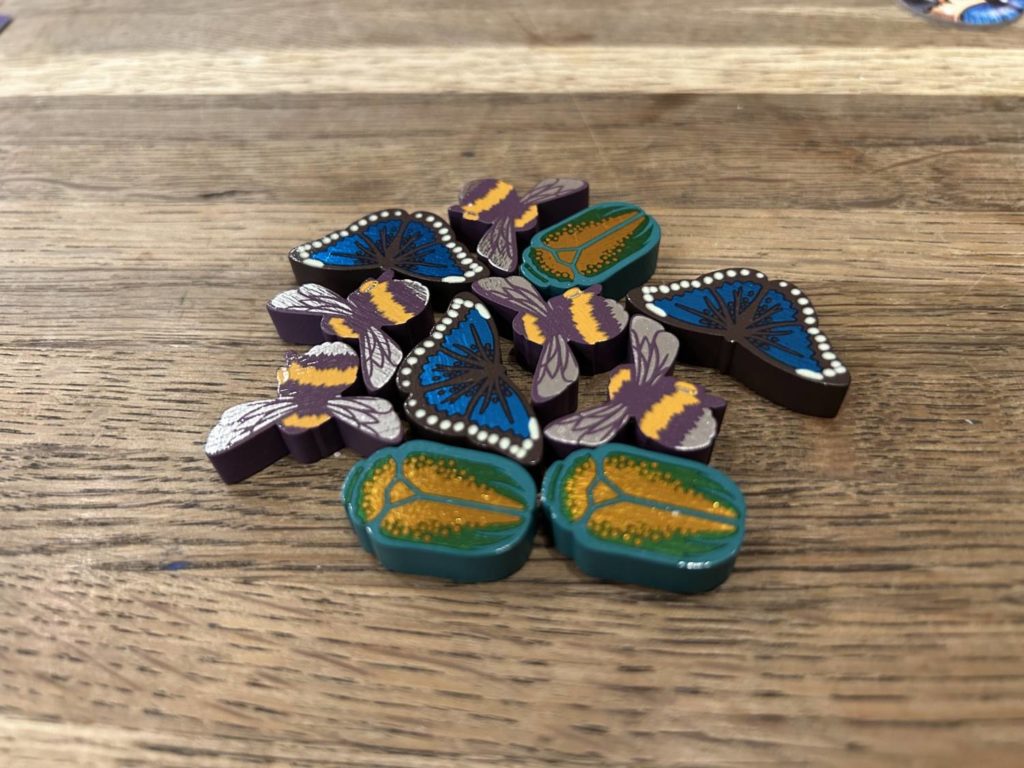
The win conditions are the only part of Pollen that can be initially confusing. The winner is the player with the majority in two of the three insect types. This is difficult to manage, at least in a three-player game. If there is no such player, any player who doesn’t have the majority in one category is eliminated. Remaining players add up the insects from the categories in which they are not the leader. If I have the most butterflies, my score will be the number of beetles and bees that I’ve collected. If there is still no winner, each player adds up all of their insects.
I don’t normally go into detail on rules, but the tiebreakers here are a perfect example of great game design. They steer the play experience, discouraging hyper-fixation on one type of bug. It would be easy to dominate in one bug at the expense of the others. If you commit all of your wilds to the cause of a single bug, you will win that bug. Do that, though, and you’re likely to lose on the first tie-breaker. It keeps all the players looking at the entire board.

Buzz Buzz (What I Don’t Like)
I could do with the box for Pollen being smaller. I know I always say that, but the components nearly fit in one of Allplay’s small boxes, which are one-third the volume of this box, so I know it can be done. Then again, people wouldn’t pay $39.00 for a box that size. I am not, I want to be clear, accusing Allplay of trying to inflate the price by making the box bigger. The components here are high-quality, and likely justify the cost from a manufacturing standpoint. It seems more likely to me that the box was made bigger to justify the cost of the components. The problem is, $39 is a steep price tag for this game.
This is one of the downsides of production fetishism, good games getting produced to a price point that’s beyond their reach. Pollen is classic Knizian magic. It is full of complex consequences that spring out of simple decisions. Each time I play, I learn something new that I want to bring forward into my next game. As a product, though, Pollen is somewhere between 33% and 50% too expensive for me to fully endorse it. If your game budget is tight, this is not worth $40. Purely as a product, Pollen misses the mark. That’s too bad. Pollen the game is nothing to sneeze at.


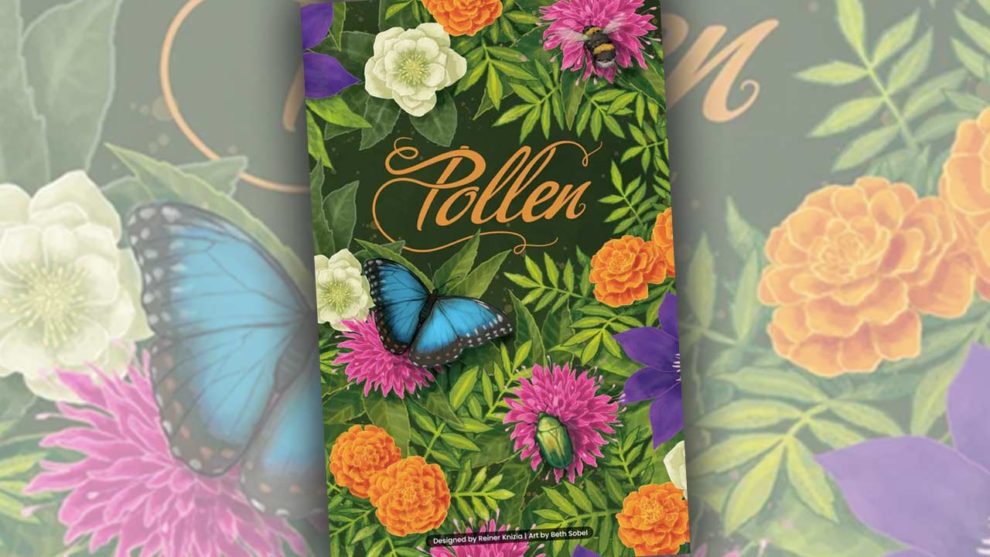

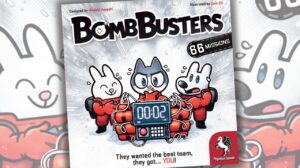







Add Comment